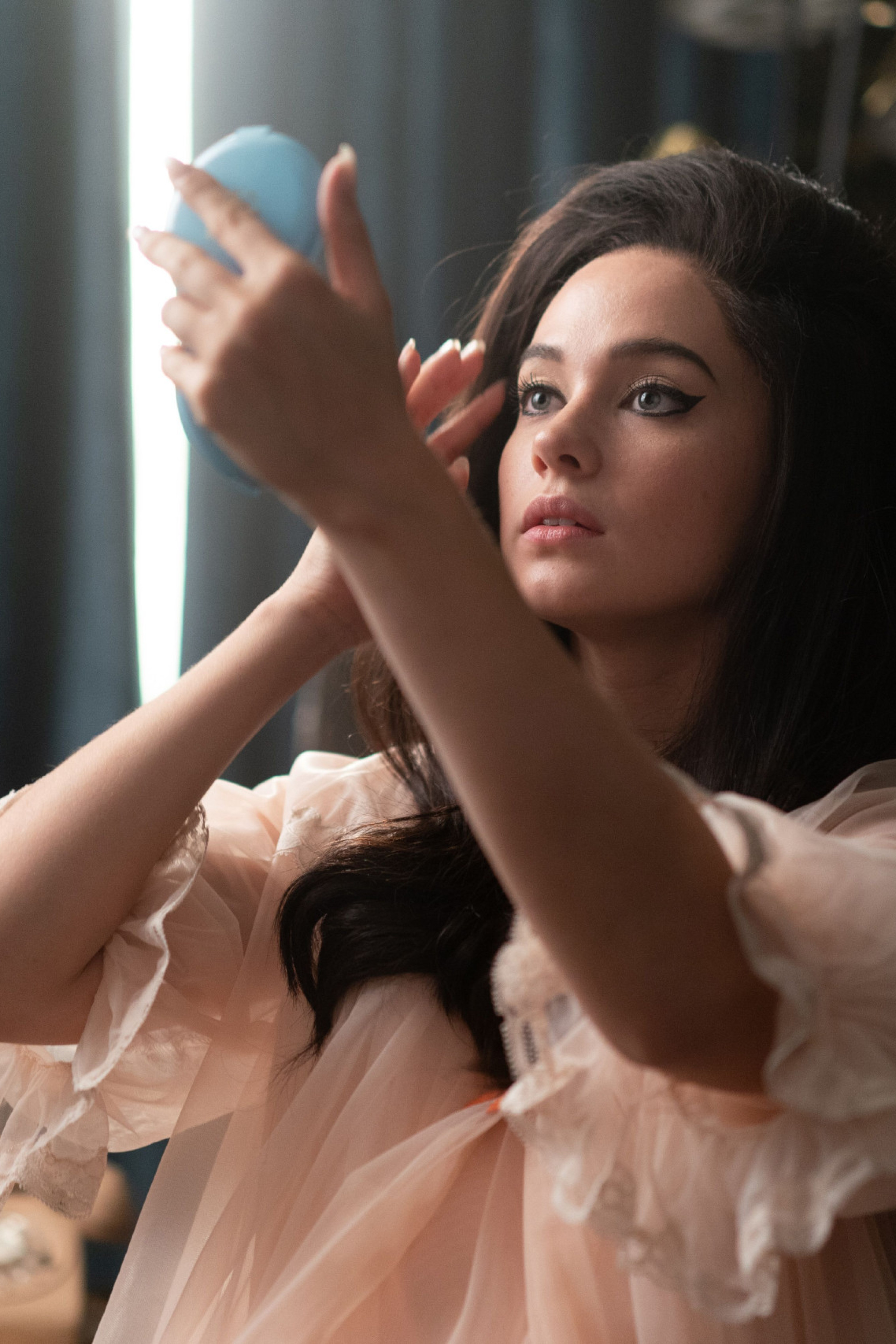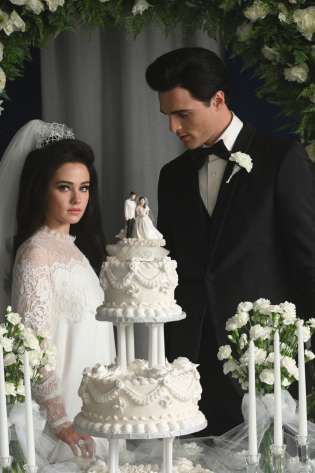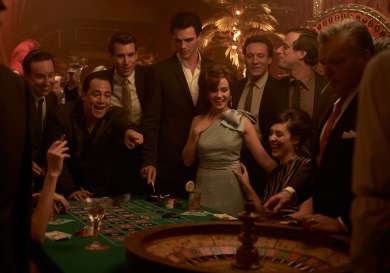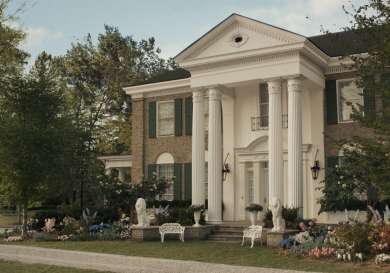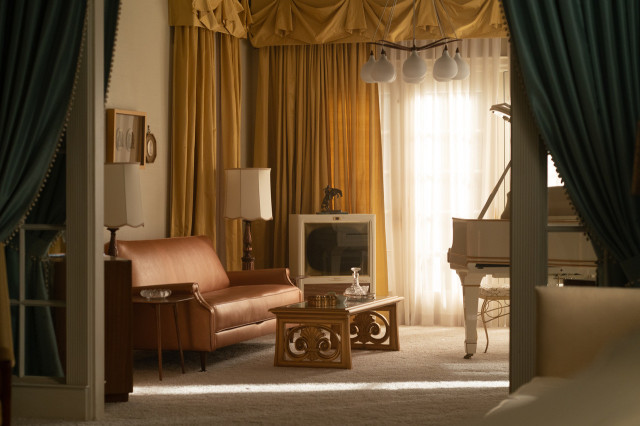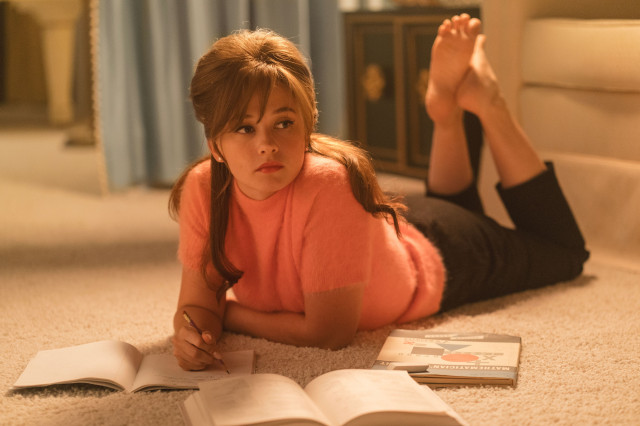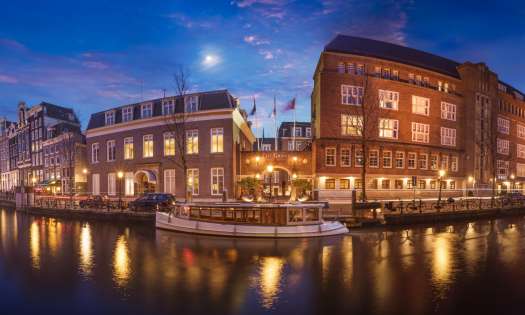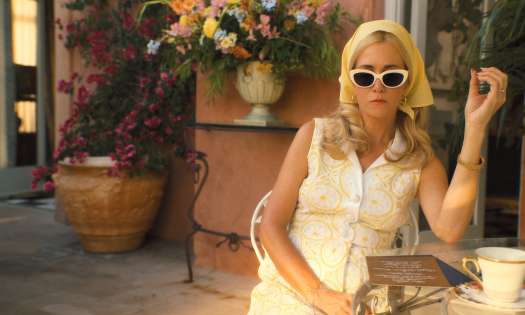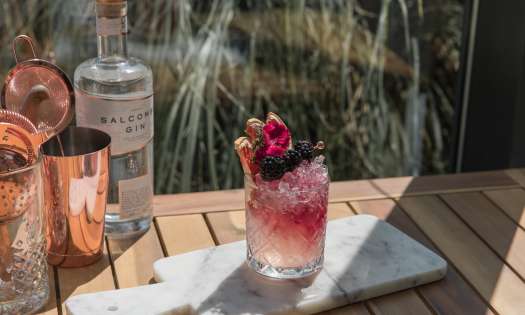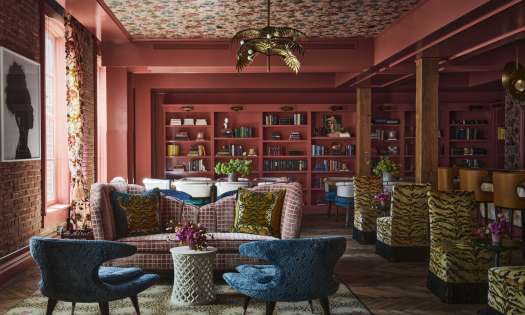Priscilla Presley’s complex life has drawn intrigue for decades. Lucy Cocoran speaks to Tamara Deverell, the production designer behind Sofia Coppola’s on-screen interpretation.
Women living in invisible cages is a hallmark theme of Sofia Coppola’s work. From the doomed Lisbon sisters in The Virgin Suicides to the isolated queen in Marie Antoinette, Coppola has historically fixated on girls and women at odds with their surroundings. Her 2023 film Priscilla was no exception.
Based on Priscilla Presley’s 1985 memoir, Elvis and Me, the storyline of Priscilla spans 1959 to 1979, tracking her initial meeting of Elvis through to their split. In between, it focuses on Priscilla’s time spent at Graceland and its impact on her. The film’s production designer Tamara Deverell, tells The Sybarite it’s about a “woman who is shadowed by a male presence in her life.”
This shadow was cast by Elvis Presley, played by Jacob Elordi. The larger-than-life rock ’n’ roll star was a force of nature. In 1959, he met a then-14-year-old Priscilla Beaulieu, played by Cailee Spaeny, while he was serving with the US Army in Germany. The fact he was 10 years her senior didn’t seem to phase him. If anything, Elvis viewed her youth and naivety as the ideal means for moulding his perfect woman.
Their relationship was complicated and lasted 13 years. During that time, the couple were married and welcomed a daughter, Lisa Marie.
“It’s a true story and it’s ultimately a love story,” Deverell argues, in spite of the aspects of their relationship that still raise eyebrows.
Deverell’s job was to bring Coppola’s interpretation to life visually, describing the role of a production designer as the “architect of the film.”
“I work with every department head to create the look of the movie,” she explains. “The primary function is to design the sets, but I’m also dealing with the special effects, costumes and location.”
Priscilla’s era was the 1960s and 1970s, meaning that some creative liberties could be taken, but ultimately it had to realistically honour that period. One of the first tasks for Deverell’s team was to build Elvis’s world with Elordi.
“We had to do so many graphics,” she recalls. “Before he even got into his Elvis skin, we had to do this photo shoot and make albums, magazines and posters. I think it helped him find his character and get in the right headspace.”
The entire film was shot in just 30 days. Given the restraints, Toronto acted as a stand-in location for Memphis, Las Vegas and Germany. Achieving this was no small feat.
Deverell employed a range of artistic tricks to alter time and space. Luckily, she had considerable work experience in Toronto, meaning she already had a list of suitable locations.
Elvis’s Palm Springs abode was shot at a mid-century home in Burlington, Canada, while a Las Vegas casino was recreated at Toronto’s Elgin & Winter Garden Theatres.
Graceland’s exterior scenes were shot at a private home just outside of Toronto. A substantial build and visual effects augmentation was required to alter the front facade, so it looked more like the original. The interiors proved more challenging as the team struggled to find relevant resources depicting the iconic property in the early 1960s.
“There’s very little documentation of Priscilla’s first arrival in Graceland,” says Deverell. “We clung to a few photos and pieces of research.”
Alongside limited archives, the present-day Graceland looks completely different to the house that Priscilla moved into at the age of 17.
Since Priscilla’s 1972 departure and Elvis’ death in 1977, the property has undergone multiple redesigns. This, along with the time constraints, meant Deverell decided to forego a site visit to Memphis, Tennessee.
“I didn’t feel a need to see Graceland because it doesn’t exist the way we were portraying it in the movie,” she explains. “The bones and exterior are there, but we were dealing with an earlier look. It’s a different Graceland.”
After gaining access to the home’s original blueprints, the team agreed to build the interiors in a studio. From there, they were free to imagine Graceland the way they believed Priscilla would have seen it.
“I went with a buttery, creamy colour palette,” Deverell says. “Kind of like a wedding cake, which is what Sofia Coppola had talked about.”
Every colour detail is intentional. The chosen palettes paint different pictures for the audience, with locations juxtaposed to reflect Priscilla’s changing outlook on life. Living with her family in West Germany, the greyscale colour palette and dull clothing create a sense of hopelessness. On the contrary, Elvis’ home appears as a satin-draped paradise where she can escape.
“We were very intentionally portraying Germany as drab with browns and greys,” Deverell says. “When she comes to Graceland, it’s like a princess’s dream – enticing and warm.”
Her team custom-built several pieces for the set, including the famous white piano with gold keys and the comically large 15-foot couch.
Deverell recalls Spaeny seeming almost childlike on the oversized furniture, unable to put her feet on the ground.
“It needed to feel like it was Elvis’s house, not her house. She needed to feel a little bit out of place there.”
Priscilla’s sense of unease heightens as the initial magic of the house wears off and Graceland begins to feel claustrophobic. A significant portion of the film takes place inside the estate, creating an intentional air of suffocation. This reflected the long, lonely periods of time Priscilla spent within its walls from a young age. This behind-closed-doors component of the film means that artistic licence was often taken.
Despite working from Priscilla’s memoir, Deverell has always been clear that the film is more impressionistic than factual: “We were more so making memories; we were trying to be more poetic than historic.”
Intentional lighting evoked this sense of memory and intimacy. Cinematographer Philippe Le Sourd cast the film in a permanent haze, making things feel enchanting and dreamlike. Overall, the movie expertly captures the mood of a young girl falling in love and struggling to understand her place in the world.
The film concludes with Priscilla telling Elvis she is leaving the marriage. He responds by asking if he has lost her to another man.
She replies, “You’re losing me to a life of my own… If I stay, I’ll never leave.”
As Priscilla drives through the gates of Graceland one last time, the air around her feels tangibly lighter. Her hair and makeup is more natural, her clothes are understated and she heaves a sigh of relief. Having entered the home as a young girl and leaving a woman, her new life stretches out ahead of her. And, while she might be doing it on her own, at least she’s free.
Priscilla can be streamed on Apple TV
